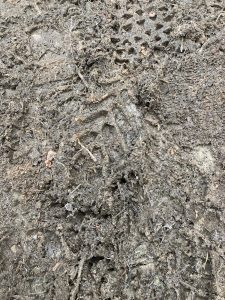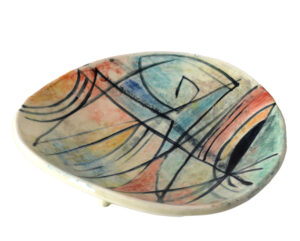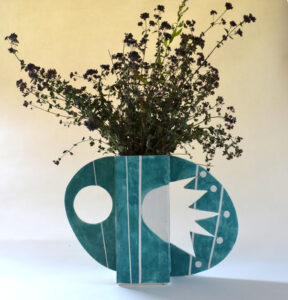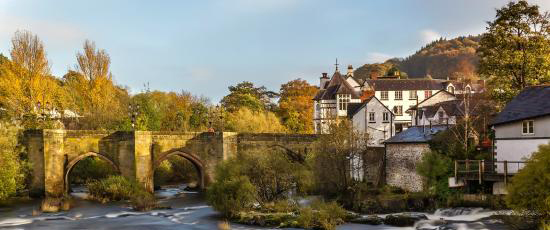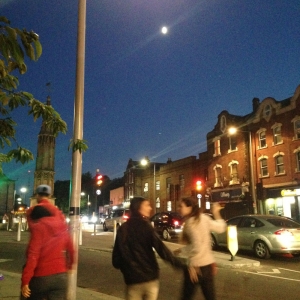political pottery
Last week I walked into the studio and slammed the door behind me. There was a resounding crash. I knew then that I should have repaired the wobbly shelf that held stacks of three legged bowls. However, all potters develop a protective skin that steers them away from howling at the moon, so I swept it all up.
I hope the night of March 28th is clear and cloudless because this month’s full moon, called the Full Worm Moon, is a “Supermoon”, the nickname given to a full moon when it’s closest to our planet. It’s named the Worm Moon due to the softening of the ground that typically happens in the spring that allows earthworms to emerge. And I couldn’t resist bringing worms into the blog again.
But March in the UK is usually associated with the yellow splash of colour that daffodils provide, and we rather take them for granted. I didn’t know that the word derives from “asphodel”, a variant of Middle English affodil, from Latin asphodelus.
Yes, we Brits do go on about our daffodils, but we’re not the only ones. They are also valued in China. They bloom around Chinese New Year, and symbolize good luck, prosperity, and good fortune. If the flowers bloom exactly on New Year’s Day, it means that you will have good luck for the entire year. The Feng Shui three legged Money Toad will also bring luck – in fact all things three legged are a good thing, unless they are on a wobbly shelf.
Now that we’re talking about China, I can remind you that this is a ceramics blog and that porcelain developed in China and exported to Europe was so named after its country of origin. Porcelain and china, by the way, are fired at a higher temperature than stoneware, which is what I use, but are made of a finer particle clay, which results in a thinner construction and more translucent body.
So, still with China, many of you will be familiar with The Willow pattern. It is a distinctive and elaborate chinoiserie pattern popular at the end of the 18th century in England when, in its standard form, it was developed by ceramic artists adapting motifs inspired by fashionable hand-painted blue and white wares imported from China. Part of the marketing ploy, claims Spiro (in charge of Marketing at Peter Arscott Ceramics), was to come up with a good story to sell it.
This is the story: once there was a wealthy Mandarin, who had a beautiful daughter. She fell in love with her father’s accounting assistant, angering her father. He dismissed the young man and built a high fence around his house to keep the lovers apart. The Mandarin was planning for his daughter to marry a powerful Duke. The Duke arrived by boat to claim his bride.
On the eve of the daughter’s wedding, the young accountant, disguised as a servant, slipped into the palace unnoticed. As the lovers escaped, the alarm was raised. They ran over a bridge, chased by the Mandarin, whip in hand, though it looks more like a ball and chain.
They eventually escaped on the Duke’s ship to the safety of a secluded island, where they lived happily for years. But one day, the Duke learned of their refuge. He sent soldiers, who captured the lovers and put them to death. The gods, moved by their plight, transformed the lovers into a pair of doves
I decided I would give the traditional pattern a more up-to-date interpretation. My visit to Hong Kong three years ago was an eye opener, and I enjoyed the vibrancy and energy of the place – click here to visit the blog – so with the suppression of free expression and democracy in Hong Kong and the repression of Uyghurs in Xinjiang in mind, I made a willow pattern protest vase, since I feel strongly about the issue, and I am a potter. Instead of the doves, two helicopters, instead of the lovers escaping over the bridge, prisoners with guards. You get the idea :
Confucius said that an oppressive government is more to be feared than a tiger.
And Confucius did not say the following:
“Man who keeps both feet firmly planted on ground has trouble putting on pants.”
zaijian – 再见 (Goodbye)



































